The Baja peninsula is home to some incredible wildlife, from endemic species to unique experiences getting up-close-and-personal with animals in the wild. Here are some of our favorite wildlife experiences on the peninsula.
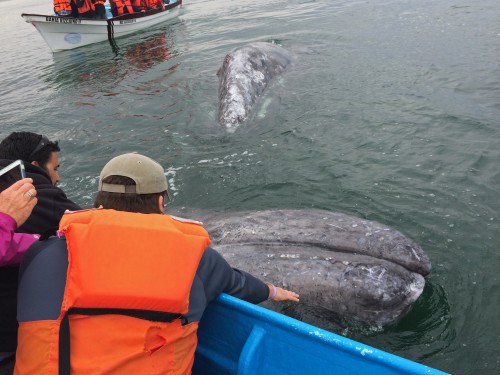 Gray Whales
Gray Whales
One of the most incredible natural wonders on the Baja peninsula is visiting with the gray whales that come to the warm lagoons of Baja California Sur to breed and give birth every winter. Every October, the gray whales of the Pacific begin a two-to-three-month migration from the cold Alaskan seas to the warm waters of Baja California. At nearly 14,000 miles round-trip, it is the longest annual migration of any mammal. The gray whales travel to the warm lagoons of Baja California Sur to mate and give birth to their calves.
From January to April, tourists travel from all over the world to visit Baja and see the gray whales. Weighing up to 40 tons and measuring nearly 50 feet long, the gray whales are gentle giants of the ocean. Seeing them in Baja is not your typical whale watching experience. In addition to putting on a show for humans by spy hopping, breaching and spouting, the gray whales of Baja actually seek out human contact and will come right up to the whale watching boats. Often mother whales will push their young calves right up to the boats so that people can pet, hug and kiss the baby whales. It’s a uniquely thrilling and unforgettable experience.
Where to See Them: Laguna San Ignacio, Ojo de Liebre (Guerrero Negro), or Bahía Magdalena
When to See Them: late January-mid April
How to See Them: Because whale watching is highly regulated, you’ll need to go out with a certified operator. Whale watchers are taken out in smalls groups of 6-8 people on pangas (small fishing boats) in order to get up-close and personal with the whales. In some places, you can show up the morning of for a quick day trip, in other places, reservations must be made in advance for multi-day packages. For more information on whale watching in Baja, visit our Gray Whale Page.
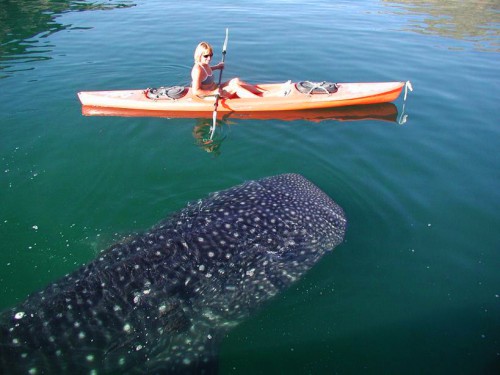
Photo by Paul J. Curtis
Whale Sharks
Whale sharks are the world’s largest fish and grow up to lengths of 40 feet and can weigh over 21 tons. With extremely large mouths, whale sharks are filter feeders and are of no harm to human beings. These docile creatures are harmless to humans and are impressive to see up close in real life. To swim, snorkel, or kayak with the whale sharks is one of the peninsula’s unique treats.
Where to See Them: In the southern Sea of Cortez: La Paz, Bahía de los Angeles, Bahía Concepción
When to See Them: The whale sharks are present year-round in La Paz but are seasonal father north in Bahía Concepción and Bahía de los Ángeles where they are generally present middle of summer to fall, depending on the weather and year.
How to See Them: Tour operators in each location will be able to take you on excursions (usually early morning when the water is the most calm) to swim, snorkel, or kayak with the whale sharks. Try Fun Baja in La Paz, El Burro Baja Tours in Bahía Concepción , or Ricardo’s Diving Tours in Bahía de los Angeles.
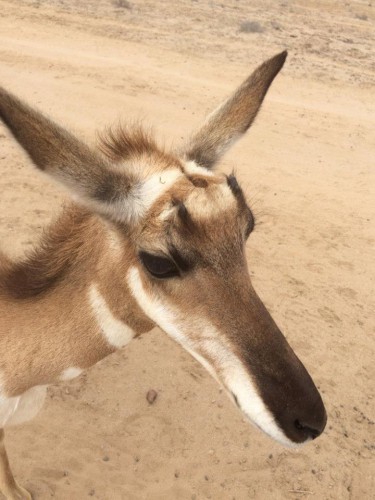 Berrendo
Berrendo
The berrendo pronghorn were once abundant in Baja, but now only exist in the Vizcaíno Biosphere Reserve area. The pronghorn is the fastest land mammal in the Western Hemisphere and can sustain running at high speeds longer than cheetahs. There are five pronghorn subspecies and the Antilocapra americana peninsularis in Baja are in critical danger of going extinct. It’s estimated that there are only 150 berrendos left in Baja. The San Diego Zoo and Los Angeles Zoo are working to reestablish the berrendo in protected areas of Baja California.
Where to See Them: There’s a conservation park just north of Guerrero Negro off of highway Mexico 1 near the airport where you can see the berrendos.
When to see them: Year-round
How to See Them: You can stop by on your own to see the berrendo at the conservation park. Admission is free.
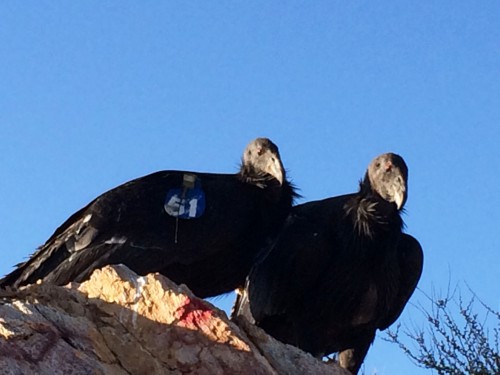 California Condors
California Condors
More than ten thousand years ago, the California condor was found all along the west coast of North America from Canada to Baja California. By 1982, only 22 condors survived in the world. Hunting, lead and pesticide poisoning, power line collisions and consuming garbage led to the demise of the population. The condors had been gone from Baja California since the 1950s.
In August 2002, five condors were transferred to Sierra San Pedro Mártir as a program to reintroduce the species to the wild. The San Diego Zoo manages the recovery program, working with Mexico’s National Commission for Natural Protected Areas and the U.S. Fish and Wildlife Service. As of 2015, there were 28 condors living in the San Pedro Mártir and 410 worldwide.
Condors are often found in groups and can fly 160 miles in a day. As the largest North American land bird, the condors have a wingspan of 9.5 feet and can weight up to 25 pounds. They mate for life and lay one egg every two years. The condors living in the San Pedro Mártir have become used to humans and are therefore easy to observe and photograph.
Where to see them: Sierra de San Pedro Mártir Parque Nacional
When to see them: Year-round
How to See Them: Just before the entrance to the Parque Nacional Sierra de San Pedro Mártir is a lookout where California condors congregate. You’ll find some of the endangered birds perched on top of granite rocks and can watch as they soar over the valley. Admission to the park is 62 pesos per person.
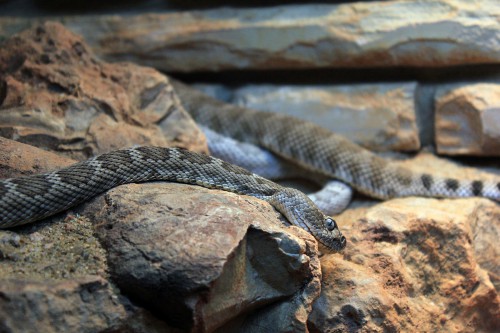
Photo By Yinan Chen
Rattle-less Rattlesnake
Another unique and endemic creature on the Baja peninsula is the rattle-less rattlesnake (crotalus catalinensis) of Isla Santa Catalina, off the coast of Loreto. Without the natural predators that threaten rattlesnakes elsewhere, this island species evolved without the need for a defensive warning system and thus lacks a rattle. But even without predators, the snake is critically endangered because of its restricted range, limited food source, and possible over-collection by pet reptile trade. This is the only place in the world to see these unique reptiles.
Where to see them: Santa Catalina island, specifically on the western side of the island often in arroyos.
When to See Them: The snakes can be seen year-round and because of the lack of predators, they rarely hide. In the summer, check low-lying branches where they hangout in search of shade.
How to See Them: You’ll need to make your own arrangements to visit Isla Santa Catalina. Boat and tour operators in Loreto should be able to assist you in making arrangements.

